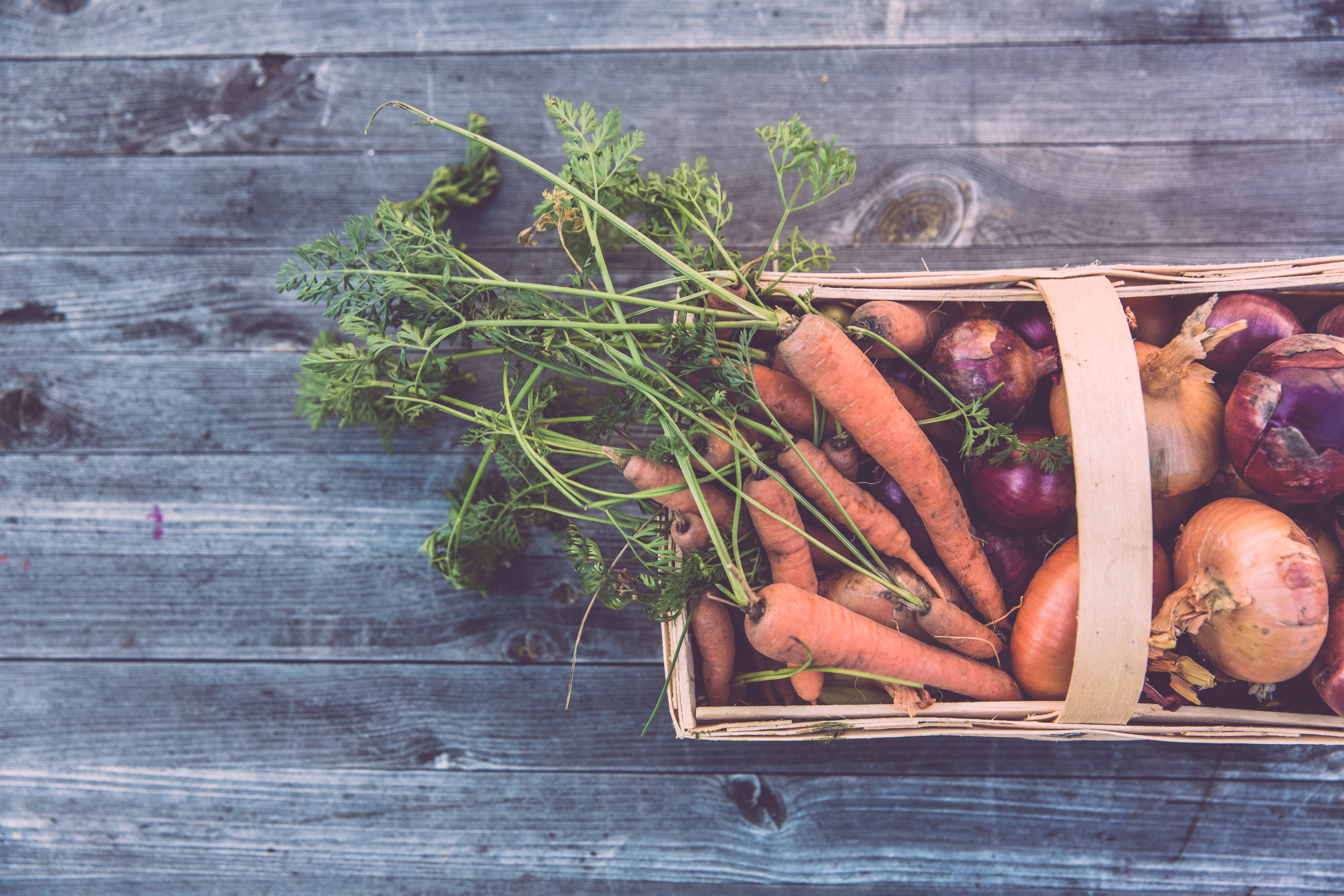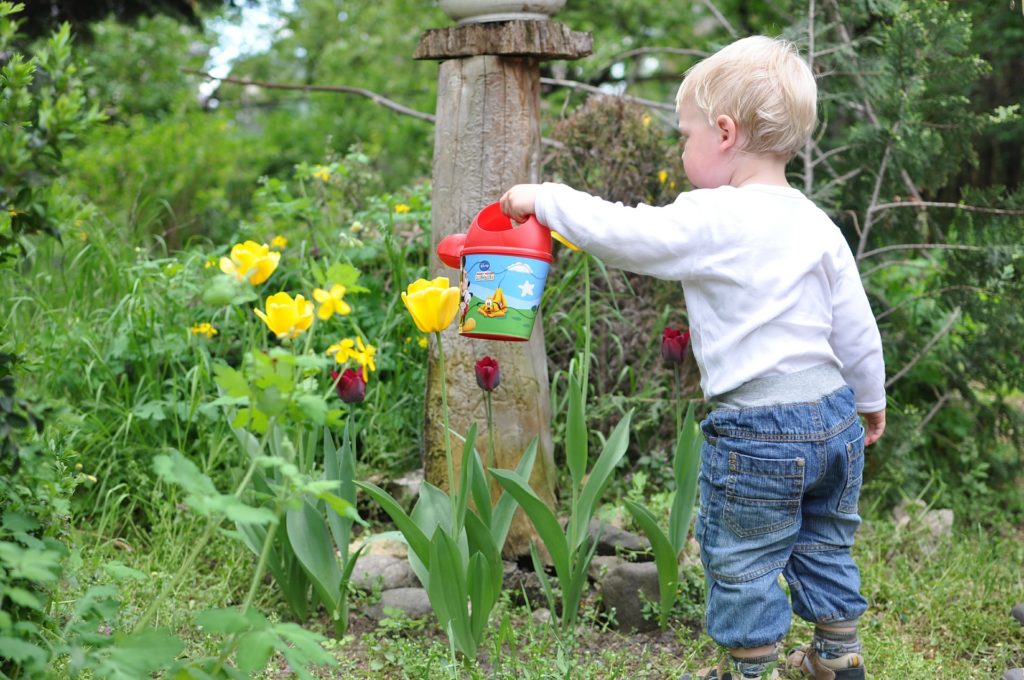Growing a Snack Garden … with kids!
There is nothing that kids love more than to dig in the dirt, so why not use those extra little hands to help you in the garden. Children enjoy planting seeds, watching them grow, and harvesting what they have grown. The experience can help them to develop a love of nature and can have a positive impact on your child’s health and their relationship with food. In fact, a study in the Journal of the Academy of Nutrition and Dietetics¹ found that gardening may even increase a child’s intake of fruits and vegetables (Hooray!), enhance their nutrition knowledge, and widen their preference for vegetables. Gardening exposes kids to a variety of fruits and vegetables and encourages taste testing straight from the ground and at the dinner table. It makes a lasting impact. The benefits of gardening don’t end there. Gardening helps kids engage their curiosity, learn to be resourceful, and boosts self-confidence. It is also a great way to get the entire family outside for fresh air and physical activity. Do I need to keep listing reasons why this is a good idea?
To begin engaging their interest, consider starting a Snack Garden! A snack garden gathers together edibles that appeal to kids. Here are some tips to get started:
- Start Small. – Choose an area of the garden just for them. It doesn’t have to be a large area; in fact, even some window boxes or planting pots will do the trick. The key to enticing them is to plant garden snack foods. That is, crops that can be seen growing and can then be plucked and eaten immediately after harvest.
- Kids like to see success, quickly! – Planting crops that grow quickly like green beans, carrots, tomatoes and cucumbers are good choices to capture their interest. Radishes, lettuces, and snap peas are also crowd pleasers are rapid growers so that your young harvesters won’t get bored and lose interest. Kale also grows quickly and while the kids might not take to it as is, they may grow to like it in smoothies or as kale chips. Berries of all sorts are kid crowd pleasers. The added bonus is that berries are generally perennials, so you will enjoy the fruits of your labor for years to come.
- Involve them and teach responsibility. – Ask children which fruits and vegetables they’d like to grow. Suggest unusual but reliable plants such as purple carrots and striped beets to keep them interested. Depending on their age, children take to gardening differently. For example, preschoolers tend to be fascinated with exploring dirt, seeds, and the watering can, while older children are more interested in how a single seed turns into an edible plant. Assign your child a watering or weeding task to give them some responsibility and illustrate the work and dedication needed to grow food.
- Theme Gardens. – Planting a theme garden for the foods they love can provide some buy in, such as pizza and salsa gardens. Many of the makings for pizza – including tomatoes, sweet peppers, onions, basil, oregano, thyme, and parsley – call for similar growing conditions, so you can plant them in the same patch of dirt and make pizza to your heart’s content. Another idea is to plant tomatoes, tomatillos, jalapenos, onions, and cilantro in the same bed for the ingredients for a chips-and-salsa party.
- Don’t forget the Herbs! – Herbs are perhaps the easiest plants to grow and can be a good place to start to interest kids in gardening. Herbs grow like weeds, so you’ll probably have more than enough. Choose one or two herbs to start, such as parsley, basil, or rosemary. Don’t worry if you have too much by summer’s end. An excess of basil can be made into pesto, frozen in ice cube trays and stored in the freezer to use during the fall and winter. And all herbs can be dried.
- Treasure Hunting. – Plant root vegetables such as carrots, potatoes, and beets and send your kids on a digging treasure hunt during harvest season. What’s more fun for kids than yanking a carrot out of the ground, brushing it off, and taking a bite?
- Let it Go! – Now that the Frozen song is stuck in your head, you can remind yourself to let go of your control compulsions. It’s OK if the seeds are all planted in a straight line and if things get a little chaotic. You may have to sneak out during nap time to clean up a few details to ensure certain plants have the opportunity to grow, but please try your best to keep the kid’s garden the KIDS garden. 😉
Reference: ¹ Journal of the American Dietetic Association, Vol. 105, Issue 8, p42
The question comes up: After we have grown vegetables, how will we use them? The next step after growing produce is to get kids into the kitchen and use what has been produced to make healthy meals. Although many items grown in the garden are perfect eaten fresh, cooking and preparing meals using fresh produce is an important life-skill for healthy living and most children enjoy helping prepare a meal. Here is a recipe to get you and your little ones started on the garden-to-fork journey. Enjoy!
Cucumber & Tomato Couscous Salad
Ingredients:
- 2 cups diced cucumbers
- 1 cup seeded and diced tomato
- ¼ cup chopped sweet onion (optional)
- 2 cups cooked couscous or rice
- 2 tsp dill weed
Dressing: 1/3 cup olive oil, 2 Tbsp apple cider vinegar, Salt and pepper to taste.
Directions:
- Toss together the cucumber, tomatoes, onions, couscous or rice, dill weed and salad dressing.
- For best flavour, chill for 1 hour before serving.
- Refrigerate leftovers within 2 hours.
Nutrition Facts: ¾ cup serving = 100 kcals, 3 grams protein, 1.5 grams fat, 17 grams carbohydrates, 2 grams dietary fibre


